Despite their reputation, the skunks that live among us can be beneficial animals. They quietly provide some homeowners with a natural form of pest control, eating many of the rodents and insects that we otherwise would not care to have as houseguests.
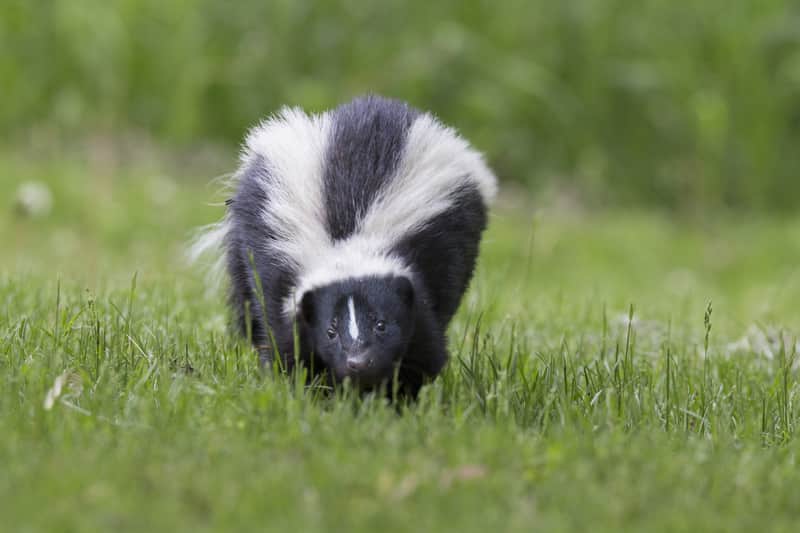
Skunk activity can also get out of hand quickly. In their search for food, water and shelter, skunks can become pests that damage both your yard and home. Here are some quick tips for identifying the skunks in your area — and for helping keep their activity under control.
Types of Skunks
There are twelve species of skunks, four of which you're most likely to encounter on your property.
Striped skunks
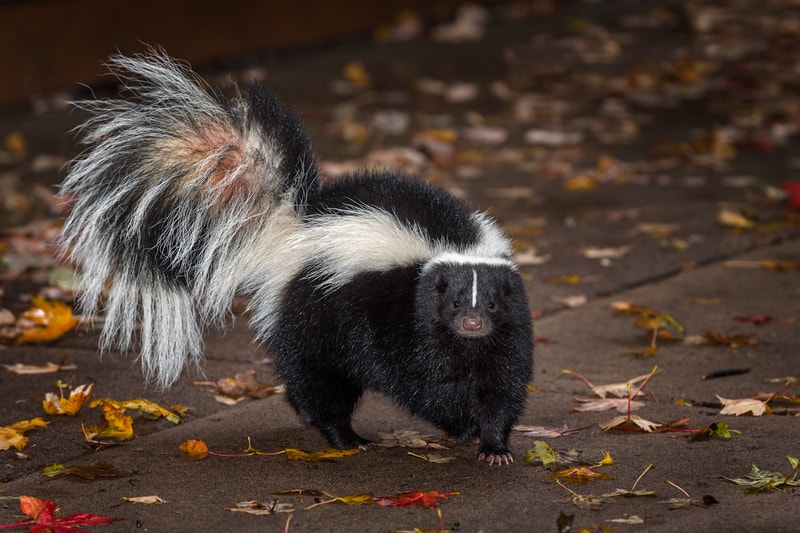
(Mephitis mephitis) are commonly found in suburban neighborhoods, among other habitats. They are black and usually about the size of a house cat. They also have prominent white stripes on their snout, as well as a white v-shaped marking on the back of their bodies. They are the largest of any skunk species and can weigh up to 14 pounds.
Hooded skunks
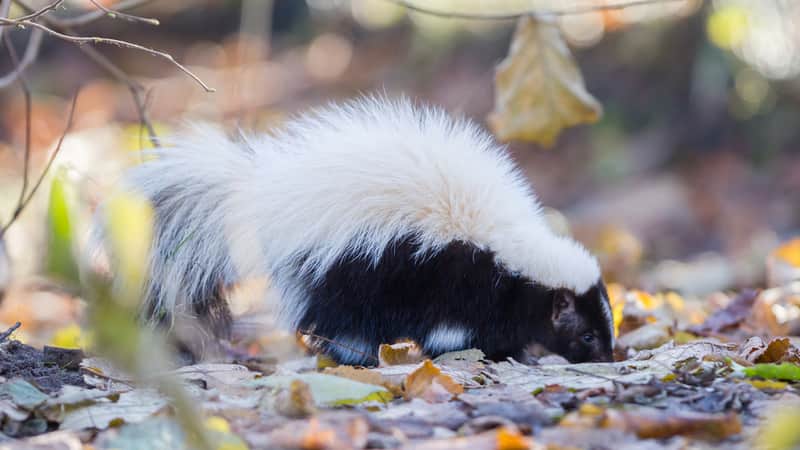
(Mephitis macroura) are sometimes mistaken for striped skunks, but their tails are longer and their fur is softer. Hooded skunks also sport distinctive tufts of fur around their necks. Some hooded skunks have two thin white stripes running down their backs and tails, while others have a single thick stripe and a solid white tail.
Hog-nosed skunks
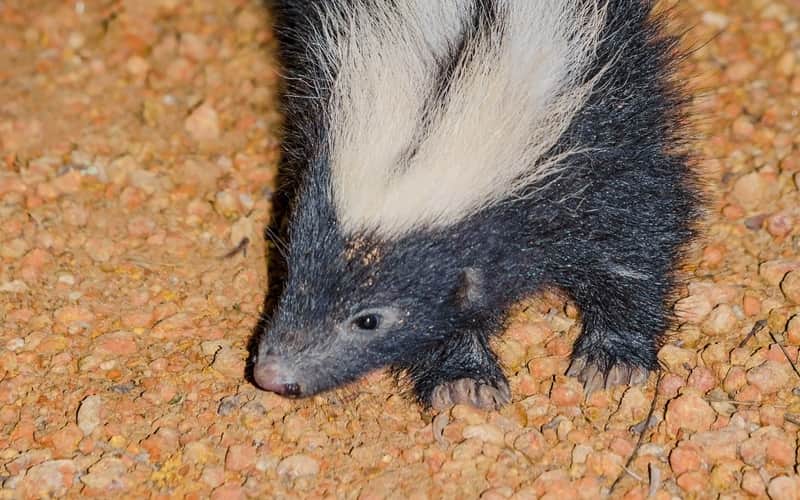
(Conepatus mesoleucus) are large skunks (2.5 to 6 pounds) marked with a single broad white stripe that runs all the way from nose to tail. They inhabit rocky or sparsely timbered regions of North America. A large population can be found in Texas. Their long claws and snouts make them excellent diggers, and they will root through the soil for food.
Spotted skunks
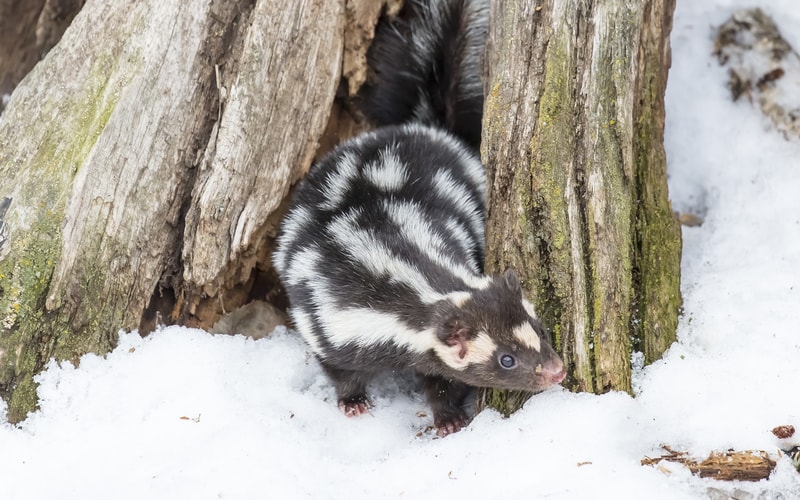
1-4 are divided into eastern (Spilogale putorius) and western (Spilogale gracilis) varieties. If you see a skunk climbing a tree, then it is likely an eastern spotted skunk. Eastern spotted skunks have several broken white stripes along their backs and a black tip on its tail that's generally shorter than the tail of other skunks. The western spotted skunk, instead has a white tip on its tail and broader white stripes on its back. These skunks are small, weighing anywhere from 14 ounces to 2 pounds.
Many animals will hide or camouflage themselves when a predator is near, but skunks give a warning instead. For instance, striped skunks and hooded skunks may stomp their feet, hiss, puff up their fur or raise their tails before finally using the stinky weapon for which they are most known.
Skunk Spray
Skunks are generally not aggressive, but like almost all animals, they will defend themselves when they feel threatened. Skunks are equipped with special glands located underneath their tails. These glands produce an oily liquid known as skunk musk. When skunks perceive a threat, they spray their attacker with this musk. The chemical makeup of skunk musk varies by species, but each version contains compounds called thiols that are responsible for the foul smell.
Skunk spray can travel up to 10 feet (though odor can be detected further away), and when striped skunks and hooded skunks take aim, they are amazingly accurate. Skunk musk is generally harmless. However, it can cause nausea in some people, and if it does come into contact with your eyes, it can cause temporary blindness. The foul odor is also temporary, but it still may linger for days and defy the most valiant attempts to wash it off or cover it up.
Skunk Habits
Skunks will dig their own burrows, but they often prefer occupying those constructed by other animals. Skunks also make dens in hollow logs, and you may even find them under your deck, shed or foundation.
Skunks are nocturnal creatures and prefer to forage for their food at night. They are also omnivorous and will consume everything from rodents and birds to insects, birdseed, pet food or household garbage.
Skunk Pros and Cons
Having skunks on your property can be a blessing or a curse, depending on your perspective. They do eat many kinds of harmful agricultural and garden pests, such as root-damaging grubs. Skunks can be especially beneficial in rural areas, where they also feed on grain-infesting and disease-transmitting rats and mice.
However, skunks are scavengers and will likely feed on whatever you have handy. On farms, skunks have been known to munch on corn stalks, take poultry or eggs and even damage bee hives. In urban areas, their digging can also be a nuisance, leaving holes in lawns, gardens and golf courses.
Skunk holes can be 1 to 3 inches in diameter and depth. And in their effort to find grubs and insects, the holes may move from section to section each night.
Skunk Control Measures
If you’re dealing with a skunk problem on your property, here are some tips for helping get these animals under control.
- Clean up your yard and dispose of debris, such as lumber, fence posts, rock piles and other things that may provide skunks a place to settle in.
- Clean up garbage, and if possible, don’t leave pet food outdoors if you live in an area with a known skunk population. Doing so will also help control rodents, a favorite skunk food source.
Should you discover any skunks living under your house or garage, you can always contact the pest professionals at Terminix®. We offer free inspections for wildlife removal services tailored to meet your needs.


